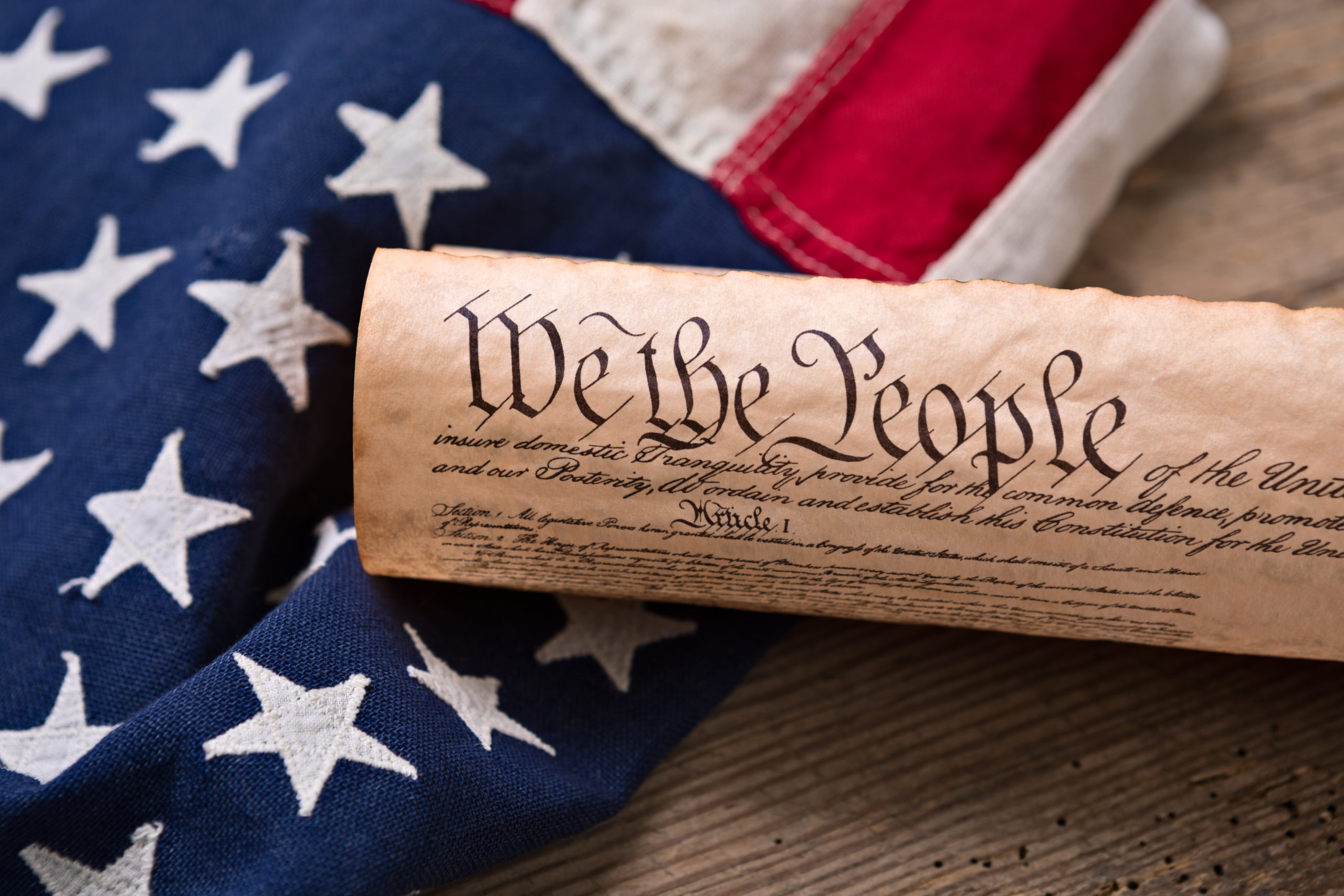September 15, 2023
Standing When You Want It
Lerner Family Associate Dean for Public Interest and Public Service Law; Professorial Lecturer in Law, George Washington University Law School

This is the second piece in a series that details some of the national consequences of the Supreme Court's last term as it prepares to begin its 2023-2024 term in October.
As most ACS lawyers know, standing is often a barrier that the courts use to prevent our clients from having their claims decided in federal court. For me, the general rule of thumb that judges seem to apply in my cases when standing is at issue is that I have standing to lose but almost never have standing to prevail. But I now understand that I have been representing the wrong clients, because the Supreme Court has recently shown a willingness to surmount, or even not mention, standing issues that might stand in the way of the conservative majority reaching a desired ruling. Here are some recent examples of how the Court overcame standing and related Article III barriers.
Separation of Powers Cases
The Court’s conservative majority strongly supports the Unitary Executive theory, under which laws that limit the President’s control over executive branch agencies, including the so-called independent agencies, are unconstitutional. In Free Enterprise Fund v. Public Company Accounting Oversight Board, the plaintiffs claimed that the Board was unconstitutionally appointed and that the provision limiting the ability of the Securities & Exchange Commission to remove its members except for cause was unconstitutional, as an interference with the ability of the President to oversee the activities of the Board. The members of the SEC were also subject to an implied protection from removal except for cause, and the Court ruled that this double for-cause protection was unconstitutional.
How were these private plaintiffs injured from the President’s inability to fire these Board members at will in such a way that would give them standing to make this claim, especially since under the applicable statute only the SEC, not the President, had the right to fire members of the Board? It’s unclear because the plaintiff’s standing was never challenged and never considered by the Court. Of course, they had standing to challenge any defects in the appointment process, and so perhaps no one thought to question their standing to raise the separate removal claim. But standing, like other aspects of the case or controversy requirement in Article III, is jurisdictional, and so, according to its own precedent, the Court had a duty to raise the issue on its own because those requirements cannot be waived by the parties.
When a similar removal challenge arose in Seila Law LLC v. Consumer Financial Protection Bureau, regarding the single director of the bureau who could only be removed for cause, the Court gave only brief attention to the issue, relying on Free Enterprise, even though the issue was not raised there or in any of the other cases cited by the Court. The Court will hear another removal for-cause claim this term in SEC v. Jarkesy, and the Government has not even raised the issue, presumably because it assumes that it would receive the same treatment as the Court gave it in Seila Law. The failure to raise standing is noteworthy because the connection between the Administrative Law Judges who work for the SEC at issue in Jarkesy and the President is far more remote than between the President and the CFPB director in Seila Law, and the duties of ALJs do not involve making any policy, which is the stated reason why Presidential control is important. Another CFPB case before this Court this term, CFPB v. Community Financial Services Association of America, the government all but conceded that the Court is determined to reach the merits in these separation of powers cases that involve laws that do not conform to the traditional agency head subject to presidential at-will removal. In this case, the Solicitor General did not even suggest that there might be a standing problem by a plaintiff who alleged (successfully in the Fifth Circuit) that the statutory funding mechanism for the CFPB was unconstitutional because the agency received permanent funding from the Federal Reserve, instead of having to persuade Congress and the President how much the agency deserved every year. The failure to even raise the issue means the spurious causal connection between the CFPB’s funding mechanism and any alleged harm to the plaintiff will likely remain unexamined.
First Amendment Cases
The majority’s strong inclination to protect religious speech has enabled it to overlook significant Article III problems in two cases. In Kennedy v. Bremerton School District, the only relief that the plaintiff sought was to be reinstated to his former position, but by the time the Court heard the case, the plaintiff had sold his house in Washington State and moved to Florida to help take care of his mother-in-law, raising a serious mootness issue. The plaintiff insisted that he would move across the country again to become a part-time assistant high school football coach, but the Court never mentioned this problem, which would have enabled it to avoid a difficult First Amendment problem on the merits. The legitimacy of the mootness claim is supported by Coach Kennedy’s recent decision to resign after coaching for a single game.
A variation of these Article III problems was also sidestepped by the Court in 303 Creative LLC v. Elenis, in which the Court reached out to decide a legal question that was unmoored from an actual dispute on which the Court could base its speech-protective ruling. The plaintiff is a website designer who is opposed to same-sex marriage. While she expressed a willingness to serve gays and lesbians, she is unwilling to create a website for a wedding they might have. She had never been asked to do a wedding website for anyone, let alone a same-sex couple. Because the State of Colorado had stipulated to many facts suggesting that there was an actual controversy, and it appeared to have sought a ruling on the merits below, the Court issued a sweeping First Amendment ruling which lacks any specificity as to what the State may or may not do to enforce its anti-discrimination laws in cases like this, other than to be very careful if an individual claims that the law is forcing them to speak on a subject that they find offensive.
Other Constitutional Claims
Last term in Haaland v. Brackeen, there was a two-pronged challenge to the constitutionality of the Indian Child Welfare Act, which establishes a preference that state courts place Indian children who have been removed from their families with extended family members or an Indian caretaker, brought by a group of plaintiffs including a non-Native family wishing to adopt an Indian child. . The Court first upheld the power of Congress to enact this law under Article I, even though adoption laws are the principal province of the states, but it then declined to decide whether the preferred treatment for Indians was a racial classification that violated the Equal Protection Clause (rather than a political one). It backed away from that question on the ground that the plaintiffs, who were non-Indian families, lacked standing to assert the latter claim. The problem, according to the Court, was that all the defendants were federal officers, and because these adoption cases are all heard in state courts, there was nothing that the federal defendants could do to remedy the alleged discriminatory harm that plaintiffs allegedly suffered. But those same defendants were the ones who were sued on the Article I objection, and the relief problem appears to be the same for both claims. Somehow the Court overlooked the standing problem for the first claim, which they wanted to decide in order to sustain the law, but discovered it for the more controversial Equal Protection claim, thereby avoiding the merits. Perhaps the pendency of the Harvard affirmative action case at the same time may have influenced the majority’s desire to postpone decision on the Equal Protection claim, although the Haaland opinion made clear that the issue could be raised in state courts – but so could the Article I argument.
Finally, the merits issue in Biden v. Nebraska was whether the President had the legal authority to cancel roughly $430 billion in debts owed the Government under the federal student loan program. The effects of the cancellation would have been to help hundreds of thousands of debtors and to make the federal treasury that much poorer. The claim looked like one in which taxpayers objected to the manner in which the Federal Government spent money, and the Court has been clear that taxpayers lack standing to bring such claims, except when the claim is based on the Establishment Clause.
Missouri had an idea to deal with the standing problem, which the majority accepted. Missouri had created an independent non-profit body to service student loan repayments for a fee. The state claimed that, if the loan cancellation went ahead, the loan servicer would lose fees which is a real economic injury. But there was a big problem: the loan servicer was not a party to the case, and it had refused to join or even cooperate with the State. Moreover, all of the profits or losses realized by the loan servicer stayed with it and were not passed along to the State.
I will not attempt to describe the means by which the Court concluded that none of this mattered so that the Court could decide the merits against the Biden administration. I suggest you read Justice Kagan’s dissent to see how far the Court had to stretch to reach its desired result. This case, more than any other, demonstrates that the Court will not let standing stand in its ways when it wishes to rule for the plaintiffs on the merits.
Despite these decisions, the Court still invokes standing in some cases to avoid reaching the merits. But the record, at least from this observer’s seat, is that when the Court wants to decide a legal issue, standing and the rest of Article III are not a barrier to doing so.
__________________
 Alan B. Morrison is the Lerner Family Associate Dean for Public Interest and Public Service Law, and Professorial Lecturer in Law at George Washington University Law School. Morrison adapted this Expert Forum blog from his recent publication in The George Washington Law Review.
Alan B. Morrison is the Lerner Family Associate Dean for Public Interest and Public Service Law, and Professorial Lecturer in Law at George Washington University Law School. Morrison adapted this Expert Forum blog from his recent publication in The George Washington Law Review.




